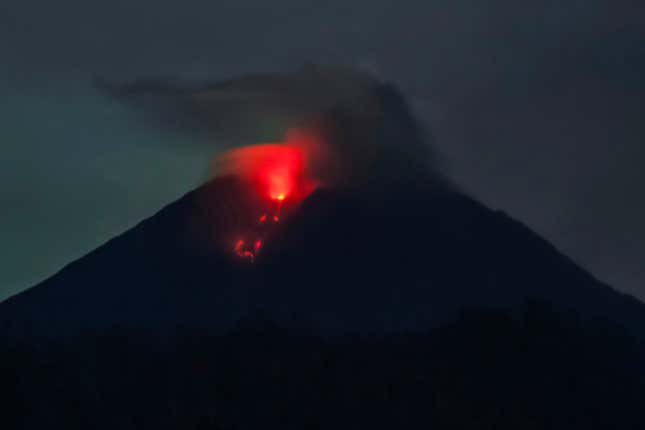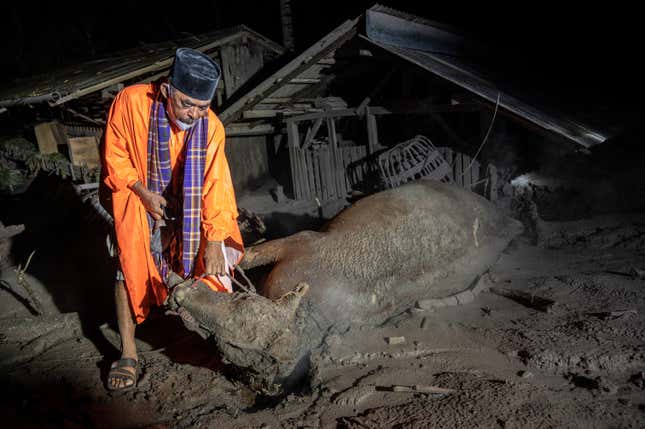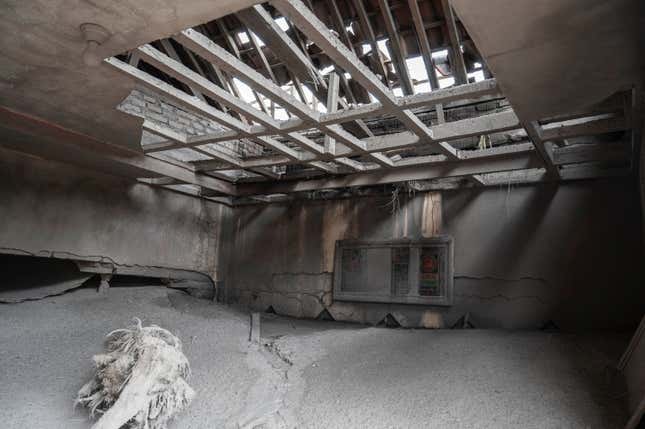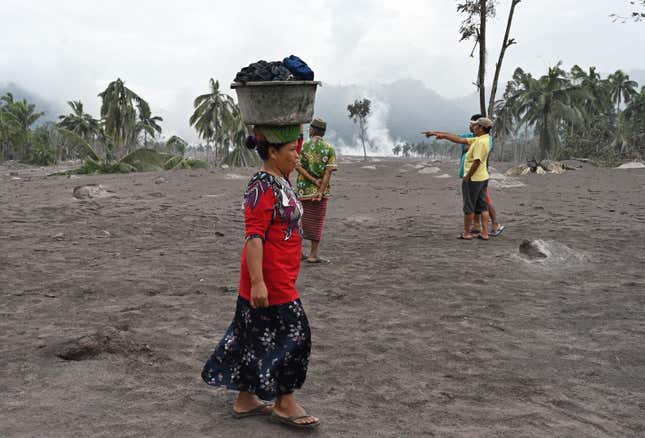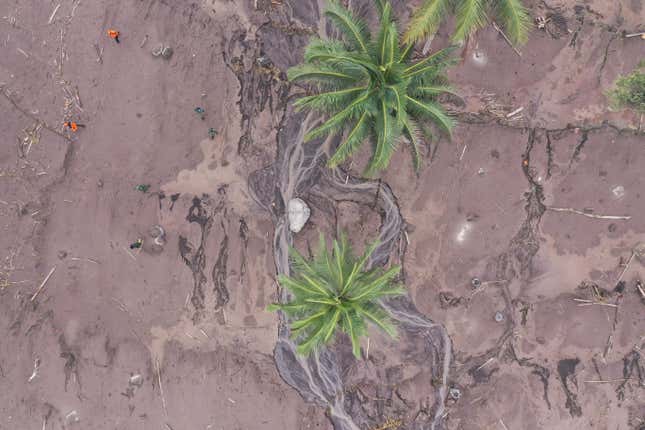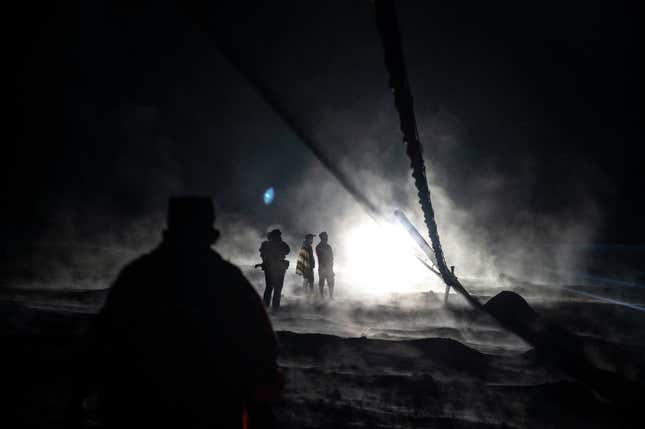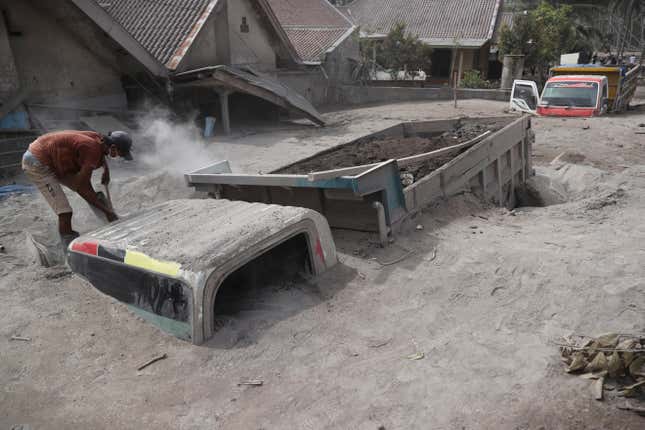
A massive eruption at Mount Semeru rocked East Java, Indonesia, this weekend. The volcano started erupting Saturday, sending a thick cloud of ash rising more than 40,000 feet (12,000 meters) in the air.
At least 15 people are dead, 27 more are missing, and hundreds of people have been displaced from their homes as rescue and cleanup efforts are just getting underway. More than 1,700 people have also been evacuated to 19 shelters across the province, the Command Post for Emergency Response of Mount Semeru told the press this weekend. Around 3,000 houses and 38 schools have been destroyed in the aftermath of the eruption, the emergency response agency said.
“Thick columns of ash have turned several villages to darkness,” Thoriqul Haq, the district head of Lumajang, told the AP.


